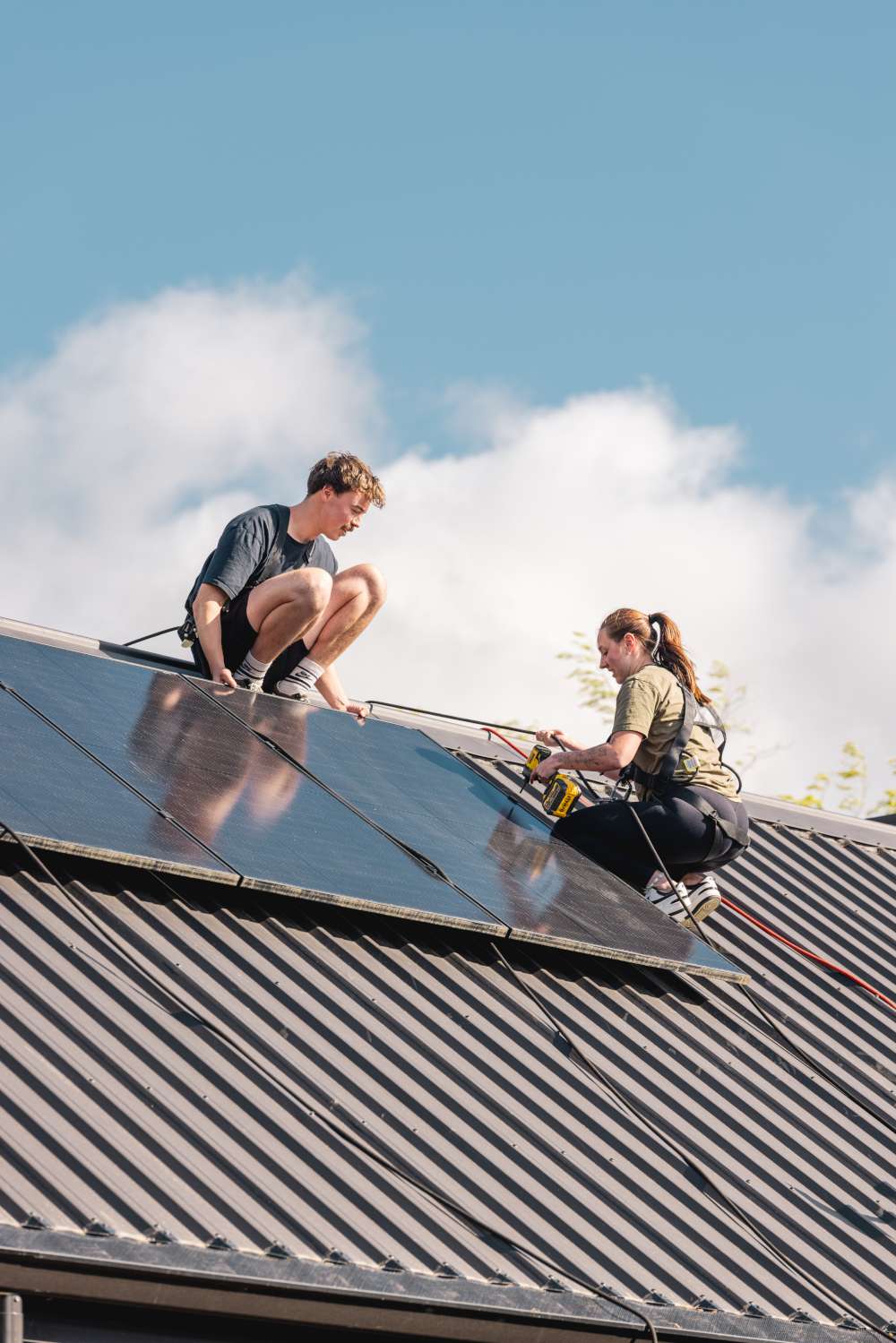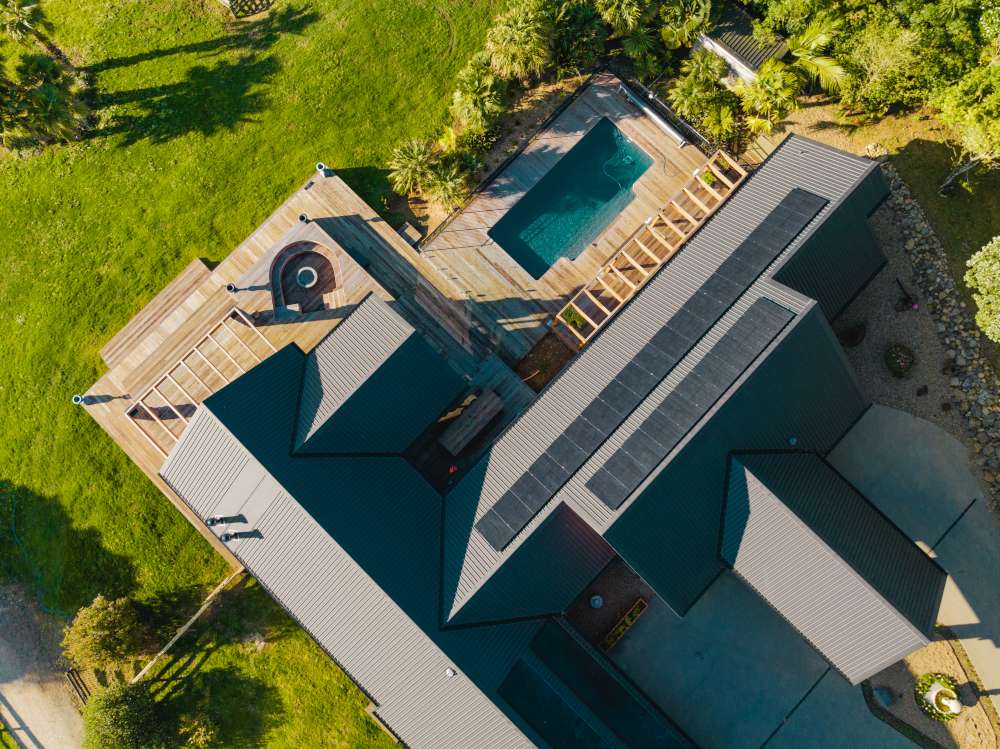Switching to solar helps homeowners lower power bills and have better resilience.
The cost of living crisis is real, and hitting Kiwi homeowners hard. Increasingly homeowners are looking for innovative ways to cut living costs.
Solar reduces skyrocketing electricity bills. To put it into perspective, says Sally Herbert, Residential Sales Manager at Lightforce Solar NZ, the national average cost per kilowatt hour [kWh] in 2004 was 15 cents. It’s 31 cents on average nationally currently, and in many regions even more.
“I know of customers, including myself if I didn't have solar, that are now paying over 50 cents per kWh, says Herbert. What’s more, kWh costs are expected to double over the next five years.
Start your property search

Why are power prices rising?
With renewable generation producing 80% of New Zealand’s electricity, homeowners expect electricity to be cheaper than it is. There are a number of reasons why this isn’t the case, she says.
“The bottom line is that with increasing electrification, we as a country are not generating sufficient electricity to meet our current demand for power, especially in winter, and especially when our lakes are low. It’s simple supply and demand economics.
“Increasing usage of electricity by both businesses and in homes places enormous pressure on our grid infrastructure, which was designed for power demand last century, says Herbert.”
"Lines and Network companies need to invest significantly into our grid infrastructure to ensure that power continues to flow into our homes. This investment comes at a cost, which homeowners will bear the brunt of. "
Why solar makes sense
It just makes economic sense for homeowners to invest in generating their own power with solar, says Herbert. When they do, households [1] can expect to reduce their annual power bill by around 80%. It also future-proofs their cost of living.
There is a cost for the initial investment into solar. However green energy finance options offering interest-free or low-interest loans up to five years for solar installations are available from major banks.
What’s more, the price of solar panels has dropped steadily over the past 10 years, the performance has improved greatly with more energy generated per panel, and panels now come with a 30-year warranty.

Utility rates.
With the cost of living crisis biting, and domestic power bills expected to rise still further, yesterday was the best time to install your system.
Herbert says most modern solar installations are paid off between five and seven years, depending on the type of system installed and how the home uses electricity. Homes with solar export power that they don't use, back into the grid.
This exported power works to offset imported power costs.
Saving money in inflationary times.
With power prices increasing between 5-8% in April this year, solar makes good sense, whether you work from home or are at work during the day. Appliances such as driers, washing machines and dishwashers, and even electric vehicles can be set on timers to operate when your solar is generating power.
Homeowners with solar export excess electricity they can’t use back to the grid. This exported power, largely during summer daylight hours, works to offset the costs of imported power in winter.
Panel only, or panel and battery?
When it comes to residential solar, there are two main types of systems available. Panels, or panels and battery.
Panels only: installing solar panels on the roof, is the entry-level solution. Homeowners who choose this approach should consider maximising the number of panels installed initially. This is for two main reasons, says Herbert. “One, it's cheaper to do this at the start because of economies of scale, and there is less risk of technology changes with adding panels in the future. Two, it sets you up for better winter generation, and will be useful if you add a battery in the future.”
"I've never had a customer complain that they installed too many panels,” she says. “I've had a number, including myself wish they had more panels on their roof."
Panel and battery: panels combined with a battery cost more upfront. However, this solution has all the benefits of panels, combined with additional rewards. “Increasingly, we are seeing more and more homeowners opt in for a battery solution,” she says. “These customers reduce their reliance on the grid, because the battery stores excess power during the day and is used at night, when we use more power."
“With today's technology, battery solutions [also] offer energy arbitrage, which is setting up your battery to discharge [back into the grid] during peak power pricing. The battery charges during the day using the sun and overnight off the grid at off-peak rates to further increase a homeowner’s savings.”
More than just immediate savings
It’s not just about money. Solar makes sense from a resilience point of view. A good example, she says, is people in Hawke’s Bay who had six to 10 days without power following Cyclone Gabrielle in 2023. Homeowners with solar could get on with many of their daily tasks.
"As a homeowner, by investing in solar, you are lowering the cost of running your home for the next 25-30 years," she adds. "You are creating a legacy of low cost power for yourself and future owners of the home."
Seek advice
With all the choices, it’s a good idea to talk to an experienced Solar Consultant before making a decision, says Herbert. Lightforce Solar is determined to help as many Kiwis as possible make the switch to solar. “We want to empower a lighter, brighter future.”















































































